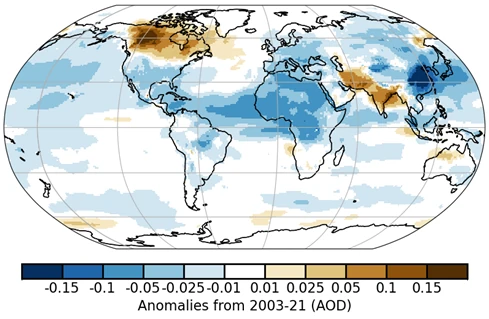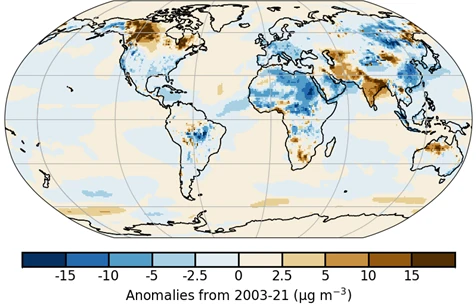
BAMS State of Climate 2023
The 34th annual State of the Climate report of the American Meteorological Society, published on 22 August 2024 reviews the year 2023, marked by high global temperatures influenced by a strong El Niño. The report provides a comprehensive overview of key climate variables during the previous year in the historical context.
The BAMS State of the Climate in 2023 gives an extensive overview of the Earth system during a year marked by strong El Niño conditions that contributed to making the year 2023 the warmest ever recorded. In the atmosphere, greenhouse gases reached new record high levels, and unprecedented Canadian wildfires led to large anomalies in carbon monoxide and aerosols.
HYGEOS scientists have coordinated the aerosol section of the BAMS State of the Climate report, one of the most established and complete of its kind for close to a decade. In 2023, the key event was the exceptional wildfires in Canada.
The analysis based on CAMS reanalysis focused on aerosol optical depth at a wavelength of 550 nanometers and surface fine particulate matter less than 2.5 micrometers in diameter (PM2.5) concentrations.
Globally averaged, Aerosol Optical Depth (AOD) at 550nm in 2023 was the lowest on record compared with 2022. The extremely high values of the fires in Canada were compensated by lower-than-usual fire emissions elsewhere. Anthropogenic AOD in 2023 was slightly higher compared to 2022, which was marked by a record low value.
The Canadian wildfires are the main event regarding AOD anomalies in 2023, including smoke transport over the North Atlantic. Eastern Siberia also presents positive anomalies related to wildfires, and Iran/India positive anomalies related to pollution episodes. Negative anomalies over parts of U.S., Europe, East Asia are caused from long-term decrease of most of anthropogenic emissions. The Sahara and Arabic peninsula saw a less active desert dust season than usual, leading to negative anomalies over these areas as well.
Anomalies of total Aerosol Optical Depth at 550 nm in 2023 relative to the period 2003-2021. Credit: BAMS SotC / CAMS / HYGEOS


The highest values of PM2.5 aerosols in 2023 were observed in the polluted regions of China and India and in areas influenced by desert dust from the Sahara and the Middle East.
Anomalies of PM2.5 aerosols in 2023 relative to the period 2003-2021. Credit: BAMS SotC / CAMS / HYGEOS

